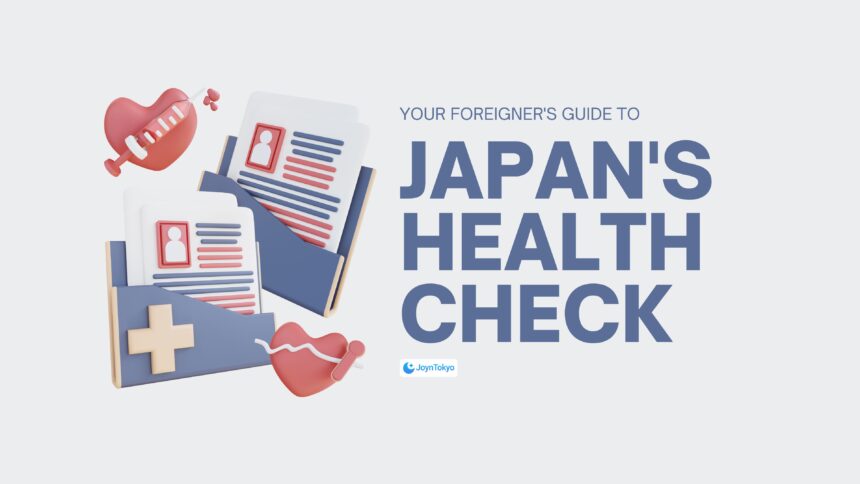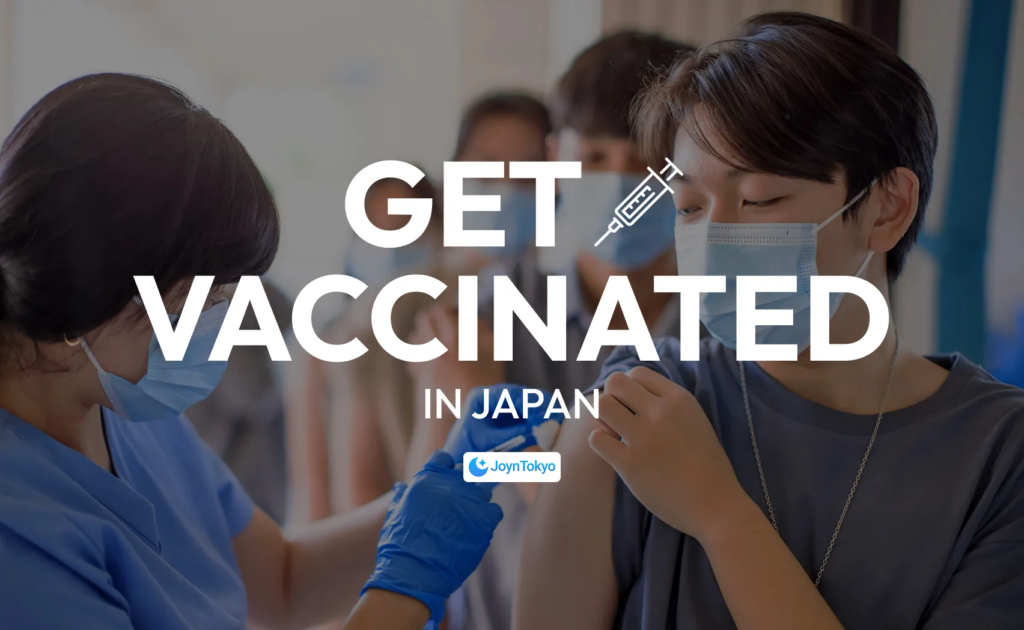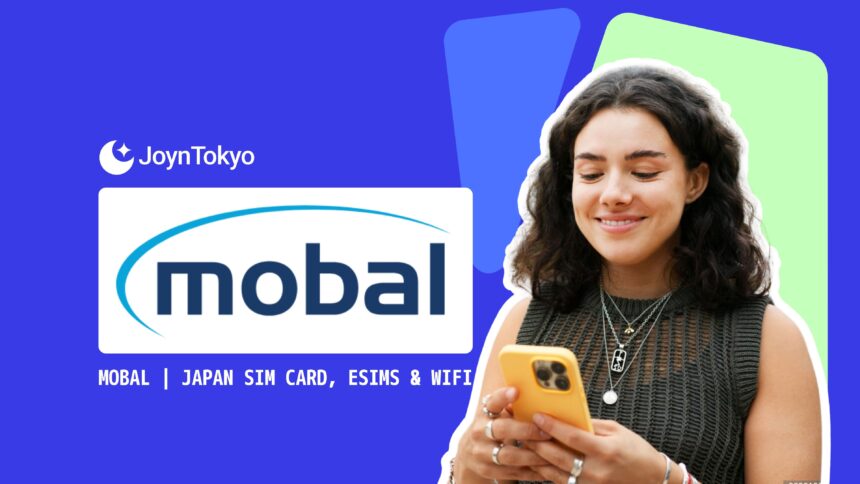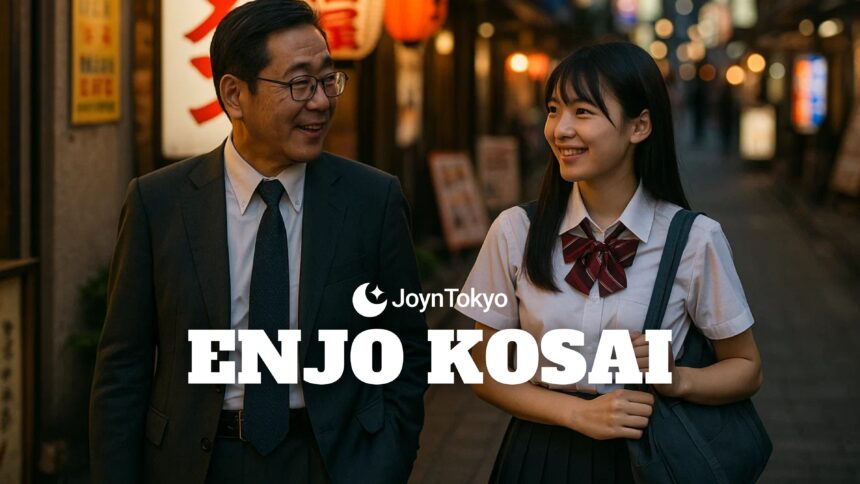If you live and work in Japan, there is one yearly health ritual that you simply cannot overlook: the nationwide employer‑mandated health check, locally known as the kenkō shindan (健康診断). This expanded guide explains exactly what the check involves, who qualifies, how much you can expect to pay, and — crucially — how to turn the resulting data into concrete, healthier habits.
Why Japan Puts Prevention First

Japan’s Industrial Safety and Health Act obliges every employer to provide a comprehensive health check to full‑time staff once a year. The underlying logic is straightforward and compelling: by catching risk factors early, individuals remain healthier, productivity stays higher, and national healthcare costs remain under control — a triple win for companies, workers, and the public purse alike.
Historical Roots
In the difficult, resource‑scarce years that followed World War II, the Japanese government positioned preventive health measures as a civic duty intrinsically tied to economic reconstruction. Over the decades, those early mass screenings evolved into today’s highly standardized, color‑coded, data‑driven packages that allow any hospital nationwide to interpret results at a glance.
Focus on Lifestyle Diseases
Modern screenings are finely tuned to detect the so‑called “lifestyle diseases” of the 21st century — conditions such as type 2 diabetes or hypertension — which often manifest silently before causing serious damage. By flagging these problems while they are still asymptomatic, employers can reduce absenteeism, and employees can avoid sickness later on.
How the Company‑Sponsored Check Works

Most companies partner with a local clinic, a large hospital, or even a mobile screening bus that parks outside the office. HR staff handle the booking, distribute pre‑visit questionnaires, and cover the entire bill, ensuring that full‑time foreign employees receive exactly the same benefit as their Japanese colleagues.
Core Tests
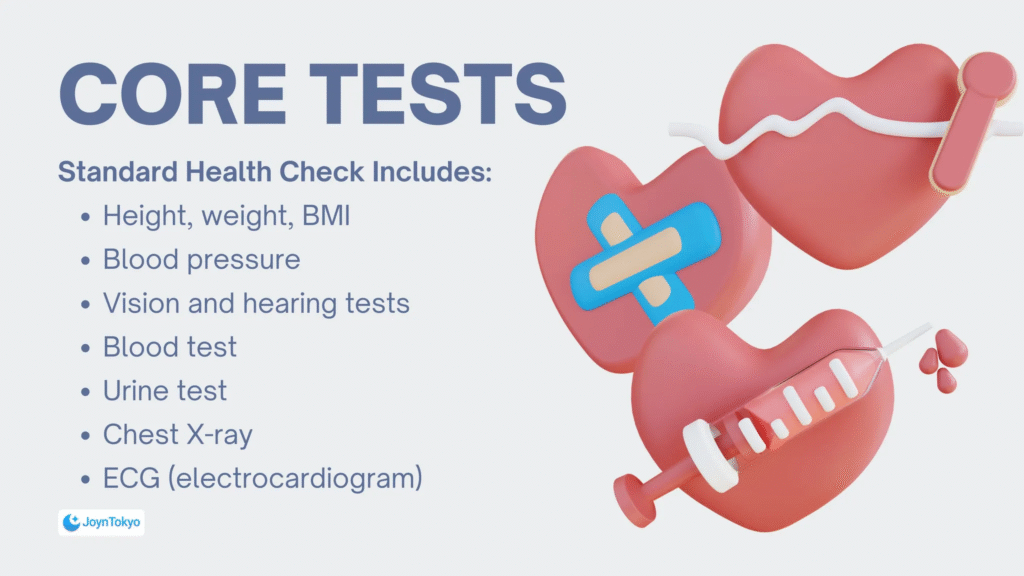
A standard package measures height, weight, and body‑mass index; checks blood pressure; tests visual acuity and hearing; draws blood for a multi‑panel analysis; collects a urine sample; captures a chest X‑ray; and records a resting electrocardiogram. Women aged thirty‑five and older are often offered a complementary breast ultrasound or mammogram, whereas men of similar age may be invited to take a prostate‑specific antigen (PSA) test.
Cost to You

For full‑time staff, the out‑of‑pocket expense is zero. Part‑time workers who clock fewer than thirty hours per week are sometimes asked to pay a reduced fee, usually in the ¥5,000–¥8,000 range, which is still a fraction of the market price.
Language Support
Urban clinics increasingly provide English summaries, bilingual staff, or QR‑code links to real‑time machine translations of key documents. Even so, bringing a bilingual colleague along or keeping a phone translation app open can turn an already smooth process into an effortless one.
Going Solo: Booking a Personal Ningen Dock
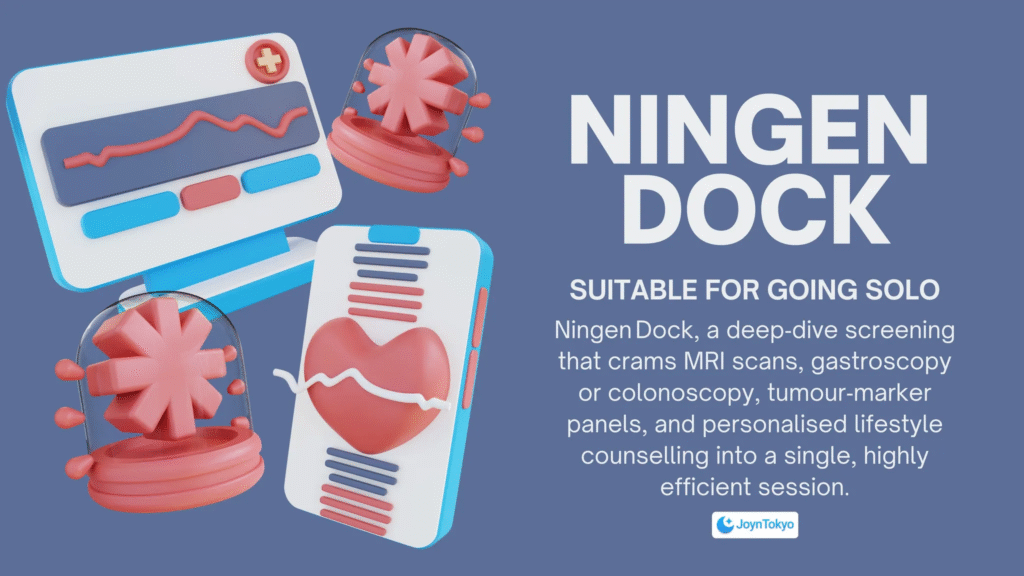
Freelancers, dependants, and health enthusiasts often opt for a Ningen Dock, a deep‑dive screening that combines MRI scans, gastroscopy or colonoscopy, tumor‑marker panels, and personalized lifestyle counseling into a single, highly efficient session.
Packages & Pricing
A half‑day Dock typically starts at around ¥50,000 and concentrates on essential imaging, plus blood work, while a full‑day, imaging‑heavy itinerary can exceed ¥150,000, once optional add‑ons such as CT scans are included. If you need a full English concierge service — think phone support, translated reports, and an interpreter at your side — budget an additional ¥10,000.
Insurance & Tax Tips
Japan’s National Health Insurance does not reimburse elective Docks, but several private international policies provide a fixed annual wellness allowance that can be applied. Moreover, self‑paid Dock expenses may qualify for Japan’s medical‑expense tax deduction, so keep every receipt and consult your accountant when filing.
Eligibility & Required Documents
Foreign residents on working, student, or spouse visas are entitled to use the very same health‑check channels open to Japanese nationals.
What to Bring
You will need three items: your residence (zairyū) card for identity verification, your National Health Insurance card if you are enrolled, and the formal appointment letter or electronic voucher supplied by your employer or hospital.
Visa Nuances
Holders of long‑term visas who are enrolled in National Health Insurance can usually book a subsidised municipal health check every two years through their city or ward office. By contrast, tourists and other short‑stay visitors are not eligible for public subsidies and must rely on private services.
Pre‑Check Preparation
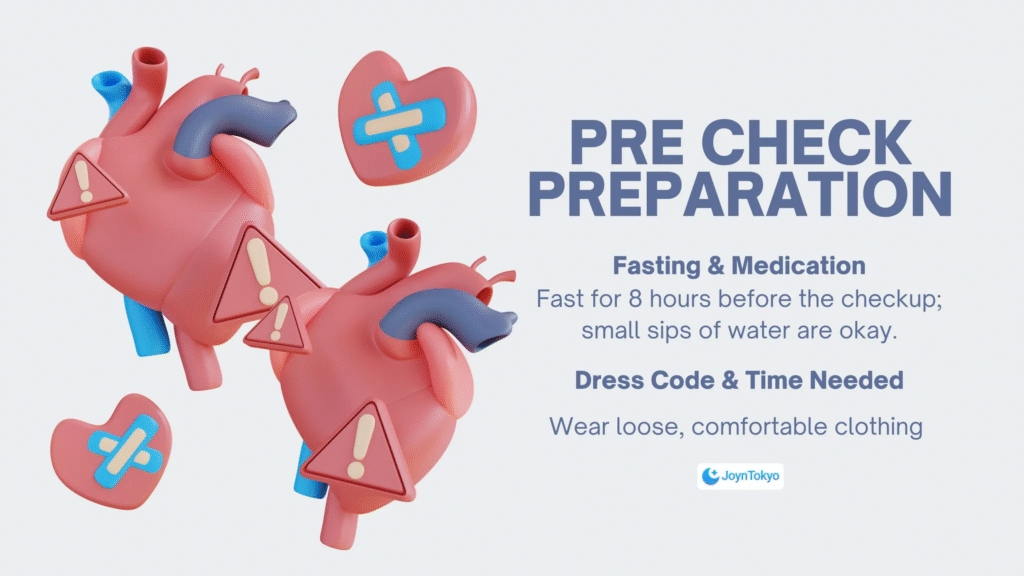
Thorough preparation not only prevents delays but also spares you the annoyance of having to repeat tests because of invalid samples.
Fasting and Medication
You are generally asked to abstain from food for at least eight hours before the appointment, although drinking a small amount of water is allowed. Continue taking essential prescription medicines, but people with diabetes should call the clinic beforehand to arrange an adjusted schedule for insulin or oral hypoglycaemics.
Dress Code and Time Needed
Wear loose, comfortable clothing, because you will change into a lightweight gown provided by the clinic. From walking through the front door to receiving your locker key back, plan on spending two to three hours in total.
Decoding Your Results
Results arrive in an easy‑to‑read booklet whose pages resemble traffic lights: green means normal, yellow signals borderline findings that merit lifestyle adjustments, and red indicates issues that require medical attention without delay.
Timeline
Digital summaries often land in your email in‑box within one working week. If you request a fully translated paper report, expect a few extra days for the additional processing.
If Something Is Flagged
Every red item lists a contact department — cardiology, endocrinology, orthopaedics, and so on — and hospitals routinely fast‑track appointments stemming from health‑check referrals, meaning you can move from screening to specialist consultation surprisingly quickly.
Turning Annual Data into Action
The true value of the health check emerges not from a single snapshot but from watching trends over multiple years.
Build Your Personal Health Record

After each screening, scan the booklet or download the PDF and store it in a secure cloud folder. Consistent archiving makes it easy to spot slowly increasing cholesterol or gradually rising blood pressure, even if you change jobs, insurers, or clinics.
Lifestyle Tweaks
Cut back on sodium, aim for thirty minutes of moderate exercise most days, keep your vaccinations up to date, and don’t neglect routine dental checks. These seemingly small interventions can nudge borderline numbers back into the green zone long before medication becomes necessary.
Key Takeaways
Efficient, inclusive, and backed by decades of public‑health data, Japan’s annual health‑check system offers foreign residents a powerful tool for preventive care. By understanding the standard tests, preparing properly, and archiving your results, you transform what might feel like bureaucratic paperwork into a personalized roadmap for long‑term health. Add a Ningen Dock every few years for a deeper diagnostic dive, tackle any red flags promptly, and you will reap both peace of mind and tangible health benefits.

